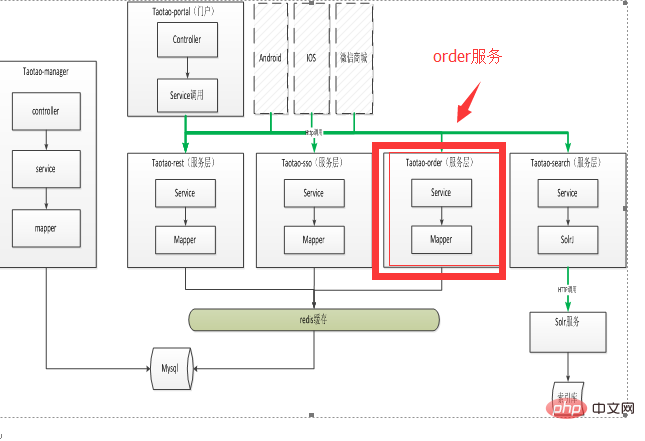Home >Backend Development >PHP Problem >How to implement the php order module
In the mall project, we have previously introduced the implementation of the shopping cart function module. After the product is added to the shopping cart, it is settled in the shopping cart. Then the product list in the shopping cart is displayed, click to settle, and then the order before submission is reached. List, after clicking to submit the order, the order will be generated and the order number, payment amount, and estimated arrival time of the order will be returned.

The order system is a very important system. Both our mobile and PC terminals need the order system, so here we use the order system as a separate service. , leaving an interface for customers to call (recommended learning: PHP video tutorial)

Today we will take a look at how this order system is implemented. :
Order system functions
What are the main functional modules of the order system?
Implementation of functions such as creating order functions, viewing order list, querying order details based on order ID, order modification, order cancellation, order status, order evaluation and other functions.
Today we look at the process of creating an order:
Design of the database table of the order system
In the final analysis, creating an order is to add it to the order table Add data, that is, insert this information.
The order function must use a relational database table to ensure data consistency, Because creating an order must ensure that it is done in a transaction (a transaction refers to an operation performed in the database: For example, insert, delete, etc.), NoSQL database does not support transactions, and data may be lost.
When we shop online, the order usually contains a lot of information, so how the order system creates its database is also very important. Creating a database is designed following the three paradigm principles of database design.
The above is the detailed content of How to implement the php order module. For more information, please follow other related articles on the PHP Chinese website!